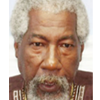A Carnival of Cricket!
That’s how world-class Caribbean cricketers describe the return of Hero CPL T-20 to Guyana later this year, in an attractive TV advertisement.
It’s not just another cricket advertisement, but, instead, an invitation to cricket fans across the cricketing world – from the Caribbean to the UK, Australia to Bangladesh, India and Pakistan, to South Africa and New Zealand – and everywhere else.
Cricket has changed much since the start of the Third Millennium in 2000, not only in terms of rules and regulations, but also how the game is played – from the introduction of new protective body gear to limiting the number of ‘bouncers’ per over and introduction of new formulae to judge unfinished matches ‘washed out’ by rain.
West Indies supporters swear the European cricket associations conspired, decades ago, to limit the number of ‘bouncers’ to one per over, strictly to reduce the pressure from the power of West Indies fast bowlers.
Hence, the introduction of grilled helmets and extra pads for body parts, all inspired by the destructive power of West Indian pacers over the ages like Courtney Walsh, Curtly Ambrose, Michael Holding, Joel Garner, Wes Hall and Charlie Griffith, who wreaked perennial havoc on all other teams.
By contrast, West Indies batsmen like Guyana’s bespectacled Clive Lloyd and Antigua and Barbuda’s bright-eyed ‘Master Blaster’, Vivian Richards, never opted to wear steel-caged helmets.
West Indies teams entered the cricketing world in a big way in the second half of the 20th Century, when the then British colonies started turning the English game on its head by beating the colonial masters at their own game, at home and abroad.
On August 31, 1968, Barbados’ Garfield Sobers set a still-unbeaten record of hitting six consecutive sixes in an over, while playing in the English County Championship for Nottinghamshire against Glamorgan in Swansea, with Malcolm Nash, a left-arm seamer, as the unfortunate bowler.
I used to think Sobers’ was the only big cricket record, until Guyanese sportswriter (and then-Director of Sports) Neil Kumar drew to my attention (circa 1995) that before Sobers’, the first unbeaten major record was for bowling, when Jim Laker took 19 wickets for a paltry 90 runs at Old Trafford in 1956.
The next big unbeaten record was also by a West Indies batsman: Trinidadian Brian Lara’s 501 not out at Edgbaston in 1994.
Indeed, I learned a lot I didn’t know about West Indies cricketers’ records from Neil’s twice-weekly reports to the Mirror newspaper’s Wednesday and Sunday issues, as Guyana, the Caribbean and the cricketing world’s attention was (back-then) on the likes of Roger Harper and Shivnarine Chanderpaul.
Back then, cricket had already made the transition from an annual game featuring Test matches between national teams in the British Commonwealth, to a sporting business with players not only being paid handsomely, but also able to win other luxuries like 4-Wheel-drive and Sports Utility Vehicles (SUVs), motorcycles – and/or thousands of US dollars — for being highest-scoring or most-outstanding players for any test series.
It soon became like normal for Chanderpaul to return home with a prize-winning vehicle from every outing, to the extent I can never remember how many he actually won (which I’m sure Neil will know off the tip of his tongue – and when…)
Then came Hero CPL (Caribbean Premier League) T20, which, Mr Google tells me today, ‘first started in 2013, as a franchise-based T20 format cricket tournament that combines two of the most compelling aspects of Caribbean life – dramatic cricket and a vibrant Carnival atmosphere.’
The 20-over, one-day, one-inning format started in India has, for the past eight years, been played (and fought-out) between teams comprising the-very-top players from the cricketing world playing matches in the multinational format, across The Caribbean.
It’s an interesting global sporting format that’s allowed players to play more often than in annual test matches, but is also more exciting, if only because of the shorter format pushing players to bat, bowl and field their best each time — or lose the one-day test.
Cricket fans annually flock, fly or sail to Caribbean territories to see T20 matches, supporters backing multinational teams instead of individuals, even though every team includes gold-standard players from the Caribbean and beyond.
The mix-and-match teams can sometimes be taxing on the nerves of nationalists, as in the case of the team playing under the Saint Lucia flag in last year’s T20 having no Saint Lucian player (which the little nationalist in me absolutely refused to accept, far less understand, but which is accepted as normal — and without a fuss — by all other fellow citizens…)
The Hero CPL T20 brand is now even more popular than classic test cricket – and dated to coincide with the Caribbean’s Carnival season.
According to Mr Google: ‘Following discussions between the Board of Control for Cricket in India (BCCI), the Hero Caribbean Premier League (CPL) and Cricket West Indies (CWI), this year’s tournament will now start on 26 August and finish on 15 September.’
Many matches will be played in Guyana, hence, the current spate of very-inviting advertisements encouraging Caribbean and world cricket fans to come, by any means necessary, to El Dorado for the Carnival of Cricket.
As the Hero CPL T20 format goes, it’s unclear which team Guyana’s Tajenarine Chanderpaul (Shivnarine’s son) will end up playing for this year.
But, from my home bleachers’ sideline observations of the games I end-up watching between writing, Young Chander’s home fans – like those of all other Guyanese playing in this year’s series – will not care which team he’s on, just as long as he and they will preen their feathers in true Caribbean carnival plumage, before an always-appreciative crowd.
Regretfully, I never took time off from pounding my keyboard over six years in Guyana to go watch a test match, but for those who’ll flock to Guyana in August and September, I safely say:
Guyana National Stadium, here (we) come!



.jpg)








